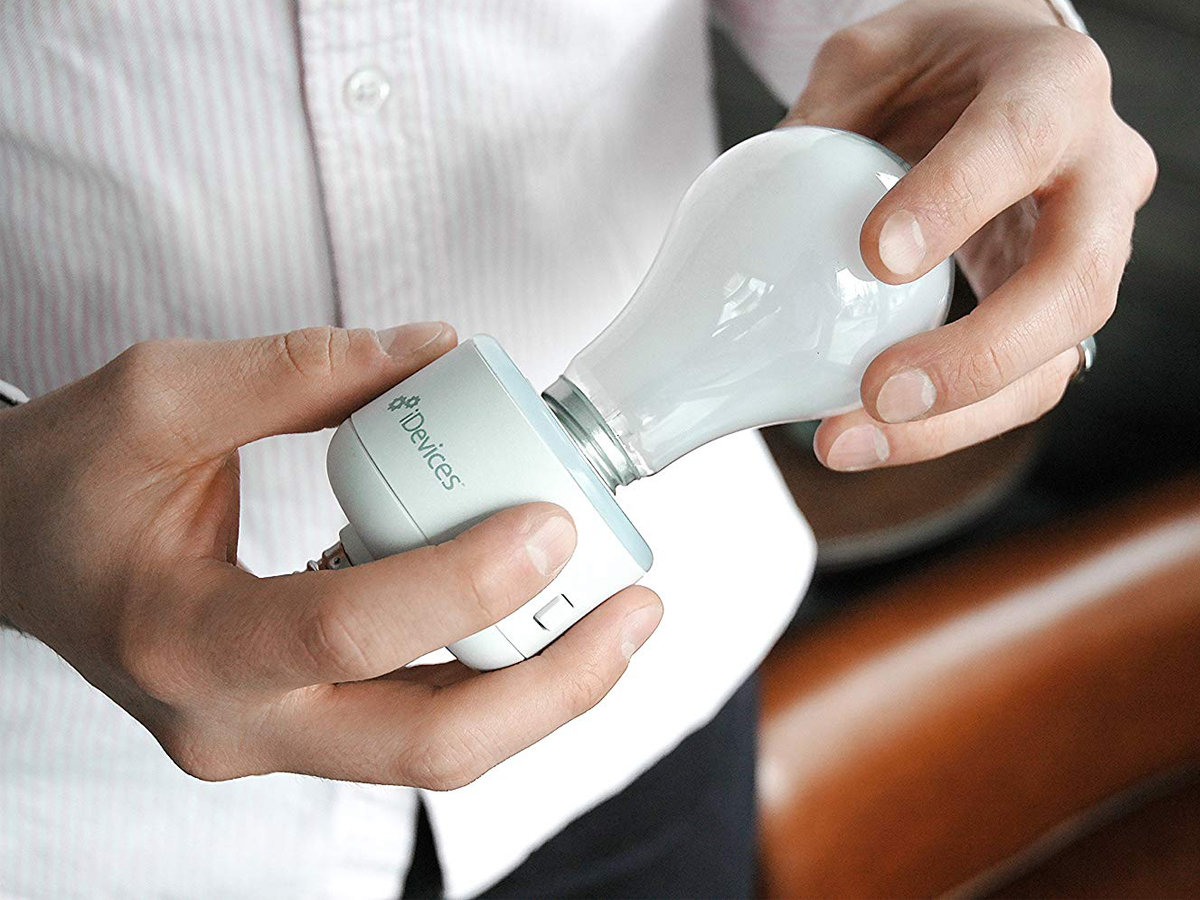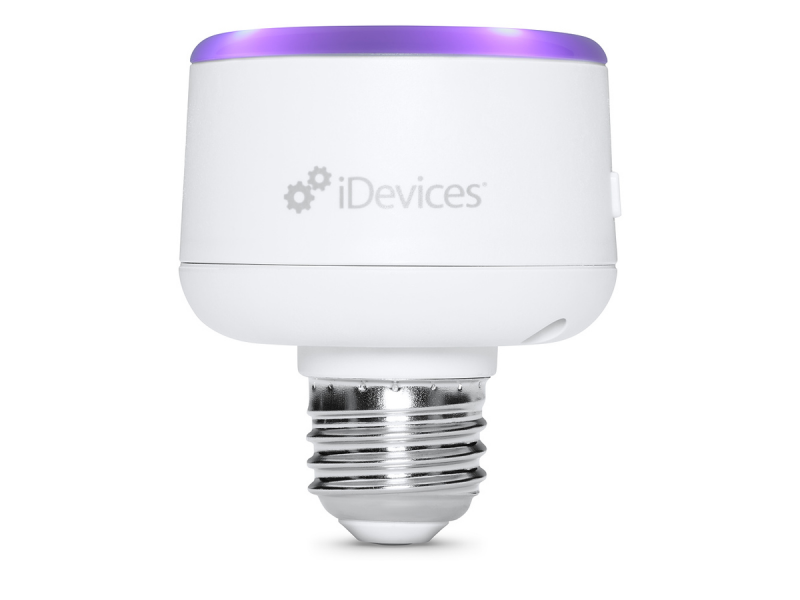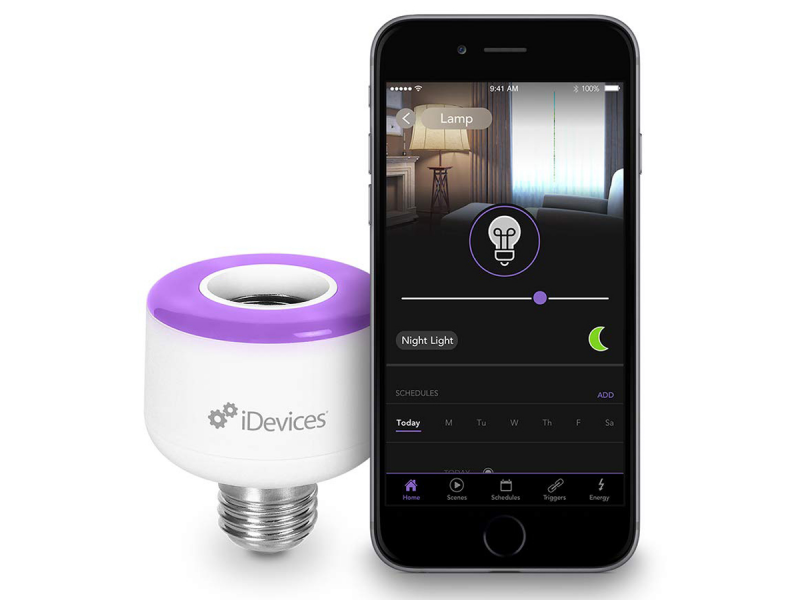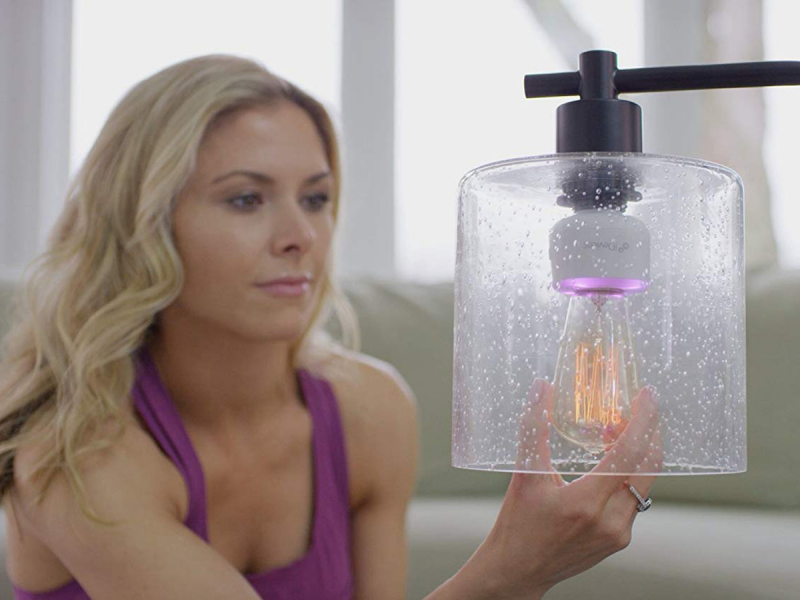Insider Picks writes about products and services to help you navigate when shopping online. Insider Inc. receives a commission from our affiliate partners when you buy through our links, but our reporting and recommendations are always independent and objective.
- The iDevices Socket allows you to control your dumb light bulbs with your phone or voice.
- It works with Alexa, Google Assistant, and Apple HomeKit, so should integrate with most smart homes.
- While it works well, it’s not the best solution for those who want to outfit a home with smart light bulbs.
The home is getting smarter, and perhaps the easiest thing to give intelligence to is home lighting. There are plenty of smart lighting products out there – ranging from smart light bulbs to smart light strips to smart light switches, but iDevices has released a product that aims to give your previously dumb lighting some smarts without the need to replace all your bulbs or switches.
That product is called the iDevices Socket, and it essentially screws into any regular light socket, after which you can, in turn, screw any regular light bulb into the socket itself. With the socket, those lights will get smart dimming controls and you’ll get the ability to control them with your phone or voice – plus the device has a nice nightlight built right into it.
But at currently $36.50 on Amazon, is the iDevices Socket worth buying? I put it to the test.
The design and fit
The iDevices Socket has a pretty basic design, but I think that's a good thing. The device has a regular light bulb screw at the bottom, and a light bulb socket at the top. It also has a ring of LED lights around the top edge, along with a button on the side, which is used to manually turn the device on and off if you don't happen to have your phone with you.
Overall, it's not a bad look. It certainly prioritizes function over beauty when it comes to general design, but it's not often that people will look at their light bulb sockets anyway.
One important thing to note about the design is the size of the device. The iDevices Socket comes in at around 2.48 inches wide, and 2.93 inches tall - so if you plan on using the socket in a lampshade or somewhere where space is limited, you'll need to double-check that you have enough room for it.
The specs and dimensions
- 2.48 inches wide
- 2.93 inches tall
- 4 ounces
- Works with HomeKit, Alexa, and Google Assistant
- Works with any standard light bulb
The set-up process
Setting up the iDevices Socket is an absolute breeze.
Depending on how you want to use the device, there are a few ways you could set it up. For example, if you plan on only using the iDevices Socket with the Apple Home app, you can just scan the code on the Socket, and you won't have to use any third-party apps. Some, however, might prefer to go through the iDevices app, which can also control other HomeKit devices and allows you to pair the Socket with things like the iDevices Instant Switch (currently $35 on Amazon), which gives you manual control over the light too.
Once the iDevices Socket is set up with HomeKit, you'll actually get two new controls - one control for the night light, which is the ring of LED lights on the Socket itself, and one control for the light bulb that's screwed into the Socket.
Using the device with other smart ecosystems is easy too. You can add the Socket to Alexa using the iDevices Alexa skill, and to Google Assistant through the Google Home app. Once that's set up, you can control the iDevices Socket with your voice or with the respective systems' apps.
Special features worth noting
So why buy the iDevices Socket over any other smart lights?
Well, perhaps the main reason is because of the fact that the iDevices Socket gives you control over multiple different lights at once considering how it's built. That's particularly handy in the bathroom or bedroom in the middle of the night, when you may only want a little light to allow you to see without waking you up too much.
Further, I found it easy to control the different components of the device within the different smart ecosystems. HomeKit control was simple, and the device was responsive through voice control with Google Assistant and Alexa.
The fact that the Socket works with the three major smart home ecosystems is a big plus in the smart home world.
While most are probably sticking with one platform for now, versatility gives users the ability to switch to a new system relatively easily down the road. While products like Philips Hue do work with a range of ecosystems too, Philips requires the use of the Hue Hub and the Philips Hue app, whereas iDevices doesn't necessarily require either of those things.
Cons to consider
While the iDevices Socket is handy in some situations, if you don't need a night light in any given room, then it's perhaps worth investing in smart light bulbs from Philips Hue (currently $140 for a three-bulb starter kit on Amazon).
To outfit your entire home with Sockets is not only a little expensive, but it's also not a very elegant solution for making dumb lighting smart. Philips Hue bulbs are reliable and inexpensive once you get over the initial hurdle of getting the Philips Hue hub.
None of that is to say that I don't recommend the iDevices Socket - I do. It's just that I recommend it to those who only want to have smart control over a few of their lights, and not necessarily their whole home.
The bottom line
Ultimately, the iDevices Socket is a great option for those who want make their dumb lights smart and like the idea of a night light. I don't think the iDevices Socket is the way to go for those who want to replace all the lights in their home with smart lights - if that's you, then it's probably better to look at solutions like Philips Hue.
Still, for the people who do only want to manage a few lights digitally or who want to add a night light to their bathroom for those middle-of-the-night trips, the iDevices Socket is a great way to do so. It's easy to set up, relatively inexpensive, and I found it to be quite reliable.
Pros: Minimalistic design, very easy to set up, not overly expensive
Cons: Not the best solution for many lights




